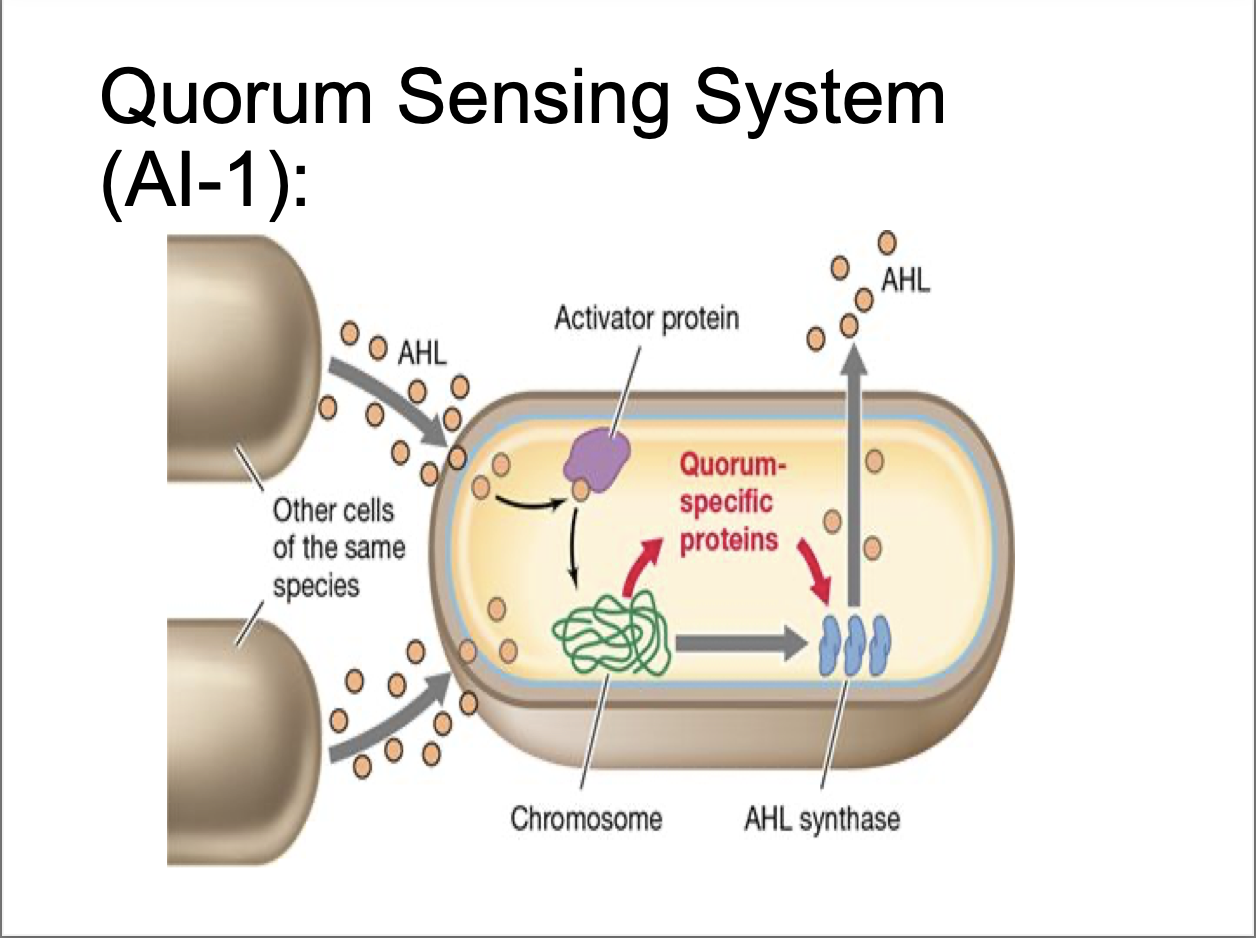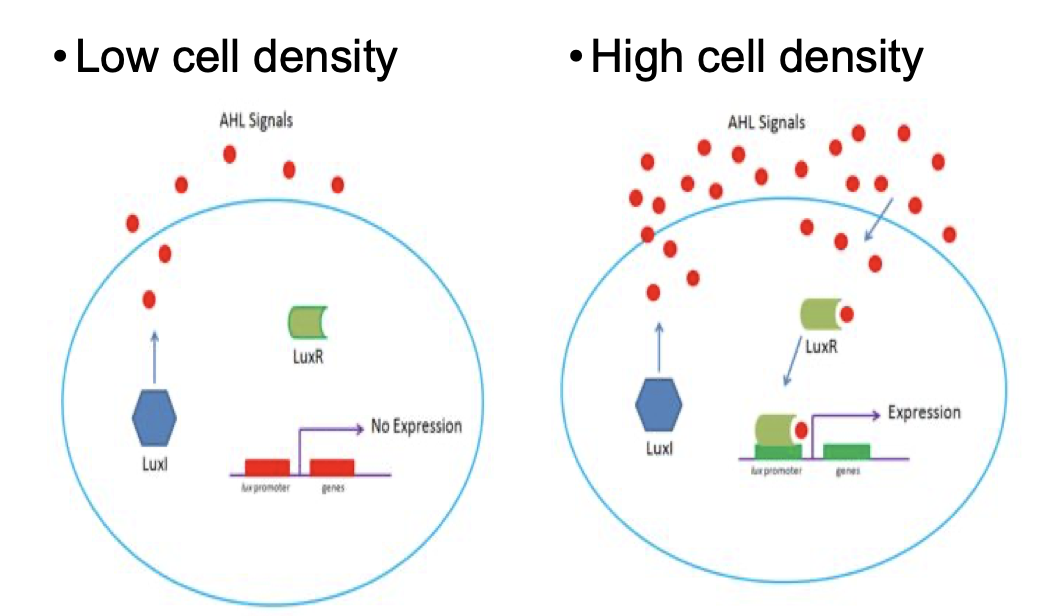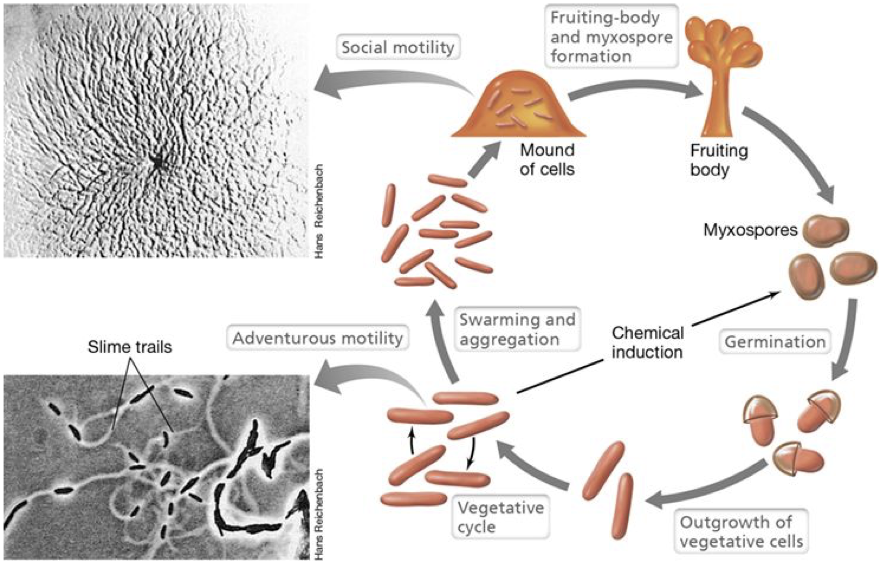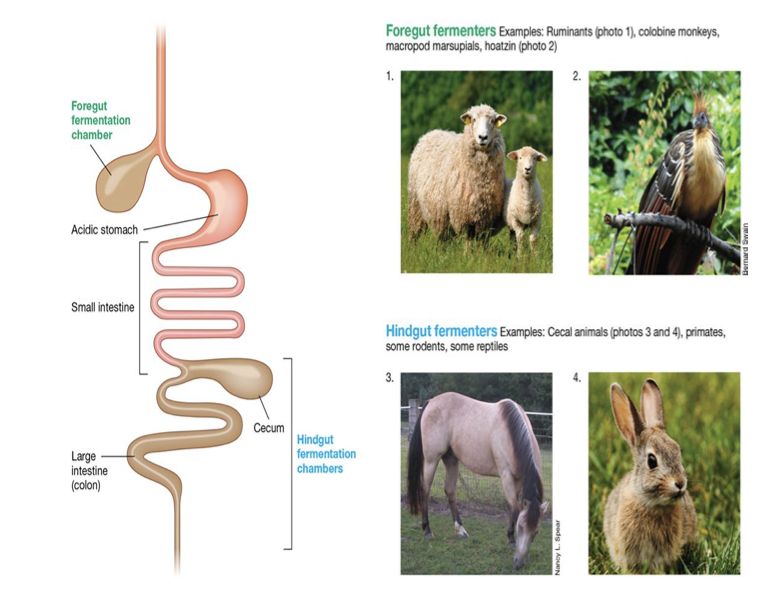18: Microbial Symbioses
1/36
There's no tags or description
Looks like no tags are added yet.
Name | Mastery | Learn | Test | Matching | Spaced |
|---|
No study sessions yet.
37 Terms
Microbial Relationships
Symbiosis = living together of 2 organisms
Mutualistic = reciprocal benefit to both partners
Commensalistic = benefits 1 organism, the other is neither harmed nor benefited
Pathogenic = benefits 1 organism, the other is harmed
Human microbiome
There are approximately 10^13 microbes in the human microbiome living in complex communities.
There are approximately 10^13 of our own cells in our bodies
– 1:1 ratio, not 10:1 as previously thought
There are about 10x more bacterial genes in this population than human genes
Biofilms
Growth of complex, slime-encased communities (dynamic, interactive)
Planktonic growth: growth as suspension
Sessile growth: attached to surface
can develop into biofilms
attached polysaccharide matrix containing embedded bacteria
Biofilms form in stages:
Planktonic cells attach.
Sticky matrix forms.
Microbial mats: multilayered sheets with different organisms in each layer (e.g., hot springs, intertidal regions)
Biofilms
Biofilms prevent harmful chemicals (e.g.,antibiotics) from penetrating, prevent protists from grazing, and prevent washing away of cells.
Biofilms affect human health, water distribution systems, and fuel storage.
Benefits to microbes:
– ↑ nutrient concentration
– ↑ resistance
– ↑ communication & gene expression– movement to other locations.
Biofilm development
Pathogenic bacteria in biofilms are physiologically different
↓ sensitivity to antibiotics
↑ resistance to host defense mechanisms
Cell-Cell Communication
Quorum Sensing
Communication using small organic molecules – allows cells to assess population density
target level induces gene expression
mutualism, pathogenicity
How do bacteria sense others?
Bacteria actively communicate with each other to coordinate gene expression as a population
Quorum Sensing: the process of detecting the population size and changing group behavior once a large enough population is present
Quorum controlled behaviors
Biofilm formation
Motility
Differentiation
Competence
Light production
Toxin production
Signaling molecules
Gram Negatives:
Autoinducers
Acyl homoserine lactones (AHLs)
Gram Positives:
Oligopeptides
Signaling Molecules
Autoinducer-1: talk within a species
AHL with specific R group
Autoinducer-2: talk between species
Autoinducter-3: talk between a pathogen and its host

Signaling molecules
Small
Membrane permeable in both directions
Passive diffusion
Quorum receptors
Cytoplasmic
DNA binding proteins or sensor kinases from two-component signaling systems
Cell-Cell Communication: Quorum Sensing
Low cell density v.s. High cell density
High cell density → AHL signal will act as an inducer and can create gene expression of Quorum proteins

Cell-Cell Communication: Quorum Sensing
Example: marine bioluminescent bacteria (Vibrio fischeri)
autoinducer = AHL (AI-1)
host-microbe interaction
microbe provides light
animal provides nutrients/habitat.
Differentiation controlled by AI-1
Myxococcus lifecycle

Signaling between species
Autoinducer-2
one of few biomolecules to contain Boron
Produced by, and sensed by diverse bacterial taxa
Receptor is a sensor kinase (HPK-RR), changes gene expression
Some bacteria can only respond to but don’t produce AI-2
stealth!
Signaling between kingdoms
Autoinducer 3
Produced and sensed by EHEC
coordinates transition from motile/avirulent to adherent/virulent
induces expression of type III secretion system
Also sensed by human cells
activates inflammation
helps to clear infection
The AI-3 receptor can also be activated by epinephrine and norepinephrine to induce virulence gene expression
Signaling between kingdoms
The bacteria is listening to the host, and the host to the bacteria
bacteria: cause infection
host: resist infection
QseC: the AI-3 receptor can also be bound and inhibited by cannabinoids (endocannabinoids and plant derived)
Gram positive signals
AIP: auto-inducing peptide
made as pre-peptide
leader cleaved off during transport to make active only after export (why?)
AIP sensed by a sensor kinase and gene expression regulated
Interfering with quorum sensing
Many quorum sensing behaviors are detrimental to humans
biofilms
virulence
Traditional antibiotics lead to selective pressure
Targeting quorum sensing, also termed quorum quenching, could lead to less antibiotic resistance
Probiotics and quorum quenching
AI-2 production:
production of AI-2 by a probiotic strain can inhibit virulence gene production by a pathogen
Peptide produced by B. subtilis can bind to AIP receptor of S. aureus
prevents sensing AIP levels
prevents activation of virulence genes
Nutritional cooperation
Nitrogen fixing bacteria invade plant root cells
plant provides sugars, protection and anaerobic environment
microbe provides fixed nitrogen
Enteric Microbial Community of Animals:
Animals are colonized extensively by bacteria, archaea and fungi in their gastrointestinal tracts to aid in digestion of food:
plant polymers especially
Carnivores and omnivores have mutualistic relationships with enteric microbes, but herbivores are totally dependent on microbial filtration
Microbes also produce beneficial compounds for the host
vitamins
short chain fatty acids
Different organization of animal digestion:
The digestive tract is responsible for breaking down food and absorption of nutrients from the food
All vertebrates have an acidic stomach and large and small intestines
Organization of animal digestion
The acidic stomach is a barrier to survival for most microbial species
The large and small intestine are responsible for nutrient absorption
Microbes can be found throughout the digestive tract but are found at high density in specialized subsections
if before stomach=foregut fermentation
if after stomach=hindgut
Herbivory
Herbivory has evolved many times in mammals.
As has association with microbes
Plant polymers are the most abundant carbon source for land animals
Vertebrates cannot digest, rely on microbes
specialized anoxic compartments
rumen
cecum
colon
extended time
Foregut vs Hindgut
Foregut fermenters are more efficient at digesting plant material
horses vs cows
Foregut fermenters get more protein from the microbes that pass with the food into the acid stomach
Some hindgut fermenters (rabbits) will practice coprophagy to recover some lost microbes and lost proteins

Ruminants
The most abundant herbivory strategy for land animals
Specialized foregut fermentation organ
Microbes participate in the conversion of cellulose to glucose and the fermentation of the glucose to volatile fatty acids (VFAs)
VFAs directly enter bloodstream
used as nutrients by other cells in body
Other fermentation products are gasses that are burped out by the animal
Agricultural ruminants contribute 14.5% of the greenhouse gasses annually
Termites
Termites have symbiosis with microbes capable of degrading plant polymers found in wood
Termites as hindgut fermenters
Insects do not have the same acidic stomach and small and large intestine that vertebrates have
But the termite has specialized fermentative organs in the hindgut that harbor specific microbes for digestion of wood to provide energy
Humans as hindgut fermenters
As omnivores we are not obligate fermenters, but we derive energy and nutrition from the microbial communities in our small and large intestines
Microbes throughout, but highest density and diversity in colon
Stomach is not sterile
Helicobacter pylori
linked to gastric ulcer
Barry Marshall self experiment
Nobel Prize in 2005
Produces CO2 as part of metabolism
non-invasive breath test
Colon
Majority of microbial numbers and diversity in humans
Anaerobic
though facultative anaerobes are also present
Outer mucus layer colonized, inner mucus layer protects cells
Products produced by human gut microbes
vitamins
B12
K
“essential” amino acids
volatile fatty acids
Butyrate
While several volatile fatty acids are produced by human enteric microbes, butyrate has been best linked to positive health outcomes
Local effects of butyrate:
Increases integrity of the gut barrier
Reduces oxygen content
less growth of pathogenic microbes
Signals to local immune cells to suppress inflammation
Systemic effects of butyrate:
Butyrate enters the bloodstream
Can be used as an energy source
Also can reduce inflammation systemically
Butyrate and the gut-brain axis:
Signals produced by the microbiota in the gut can be sensed by neurons and can cause wide scale changes in psychological and neurological disorders
Butyrate is one signal
• can also cross blood-brain barrier to act in CNSMore supported by animal models than human trials
Butyrate from the gut microbes enters the blood and can alter inflammation in other organs
High levels of butyrate producing microbes in the gut can make the immune cells in the lung better able to clear bacterial and viral infection
• also can limit damaging inflammation and production of scarring in the lungs after severe viral infection